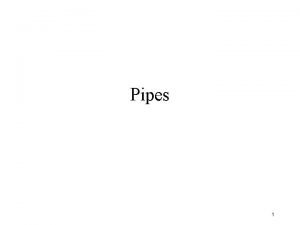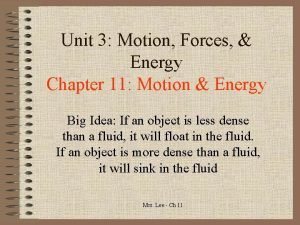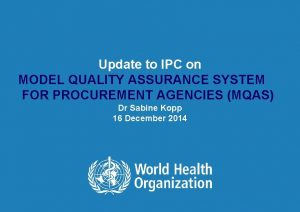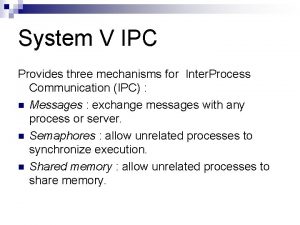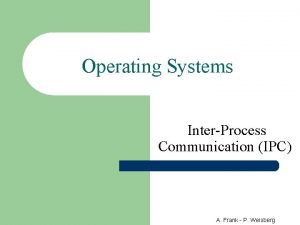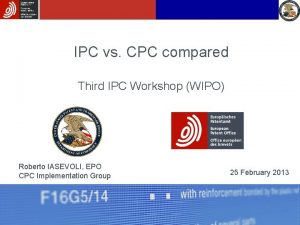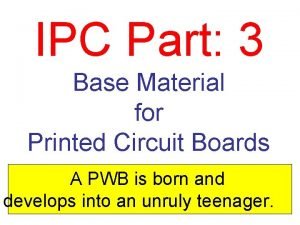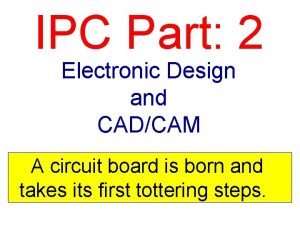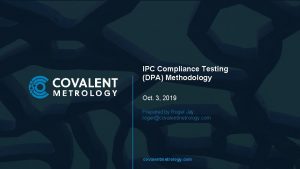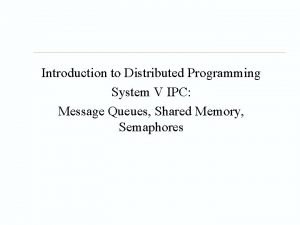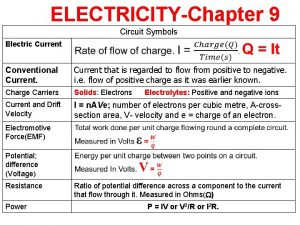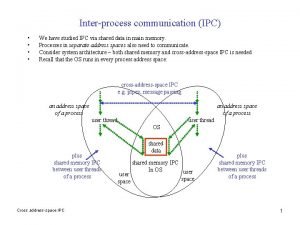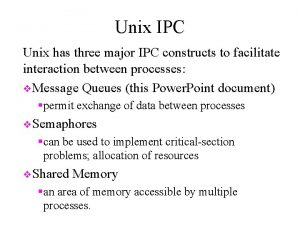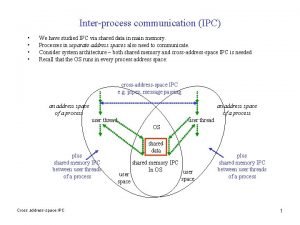ElectricityChapter 7 IPC Mrs Zagala IPC Chapter 7












- Slides: 12

Electricity—Chapter 7 IPC-- Mrs. Zagala

IPC Chapter 7: Electricity Section 1: Electric Charge *Electric Charges ex: rubbing shoes on carpet *All objects have both positive and negative charges (p and e) *Static Electricity-the accumulation of excess electric charges on an object fig. 2 (pg. 95)

Electricity (cont’d. ) section 1 n Law of Conservation of Charge -charge can be transferred from object to object, but cannot be created or destroyed

Electricity (section 1 cont’d) n Electrically charged objects obey two rules: Opposite charges attract l Like charges repel l n (similar to two ends of a magnet) n (clothes out of the dryer ex)

Electricity (section 1 cont’d) n Force at a Distance: An electric field surrounds every electric charge l The electric field exerts the force that causes other electric charges to move ex: tissue paper sticks to a charged balloon l

Conductors and Insulators n Conductors—materials through which electrons can move more easily l Ex: skin, metals, etc. l Insulators—a material that doesn’t allow electrons to move through it easily

Transferring Electric Charge ( 2 different methods) n Charging by contact: l The process of transferring charge by touching or rubbing Charging by induction: * The rearrangement of electrons on a neutral object caused by a nearby charged object (fig. 7 pg 198)

How Lightning Occurs n Lightning is a large static discharge (a transfer of charge through the air between two objects because of a buildup of static electricity) l As air masses move in a thundercloud, areas of positive and negative charge build up l Eventually, a discharge occurs between the cloud and the ground l

(More on Lightning) As the electric charges move through air, they collide with atoms and molecules n These collisions cause atoms and molecules in air to emit light (sparks we see) n

Thunder is powerful sound waves produced by lightning n Heat produced by electrical energy in a lighting bolt cause air to expand rapidly producing sound waves you hear as thunder n l Pg. 199

Grounding Providing a path for charge to reach earth is called grounding n Grounding is important to protect objects on Earth from lightning damage n l Ex: metal lightning rod, faucets, sinks, pipes, etc.

Detecting Electric Charge n Electroscope—an instrument used to detect the presence of electric charges made up of two thin, metal leaves attached to a metal rod w/a knob at the top **Fig. 10/pg. 201



